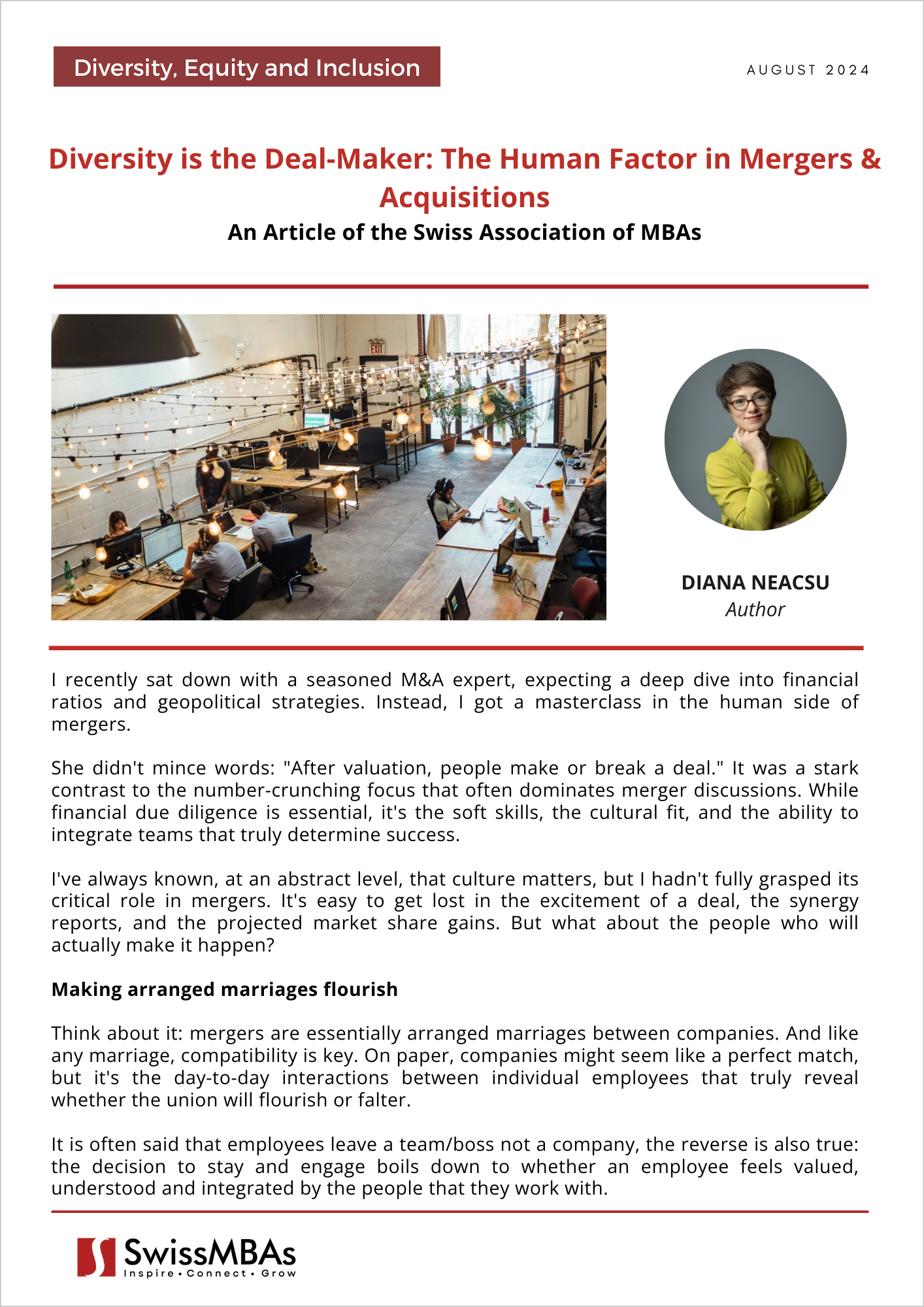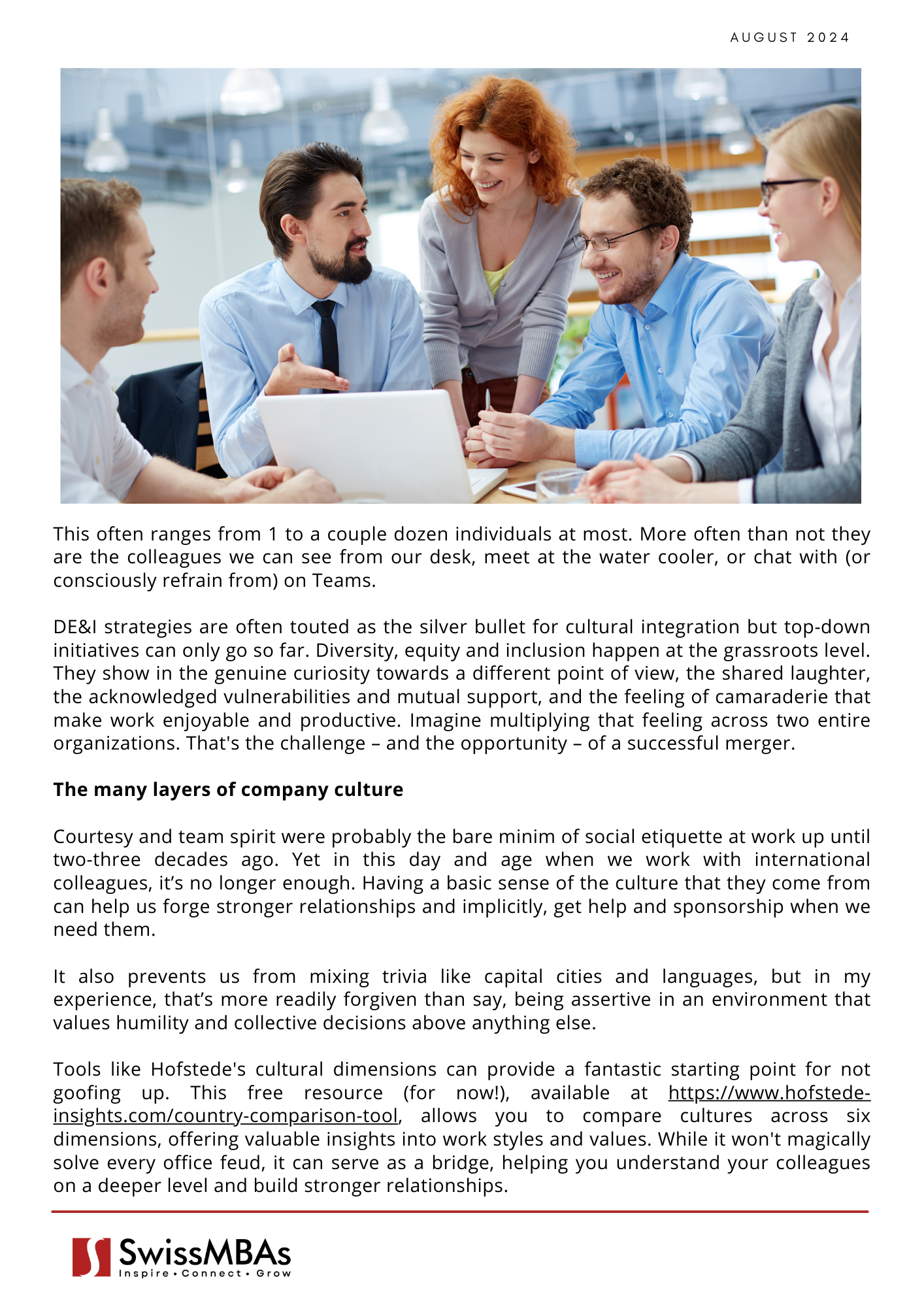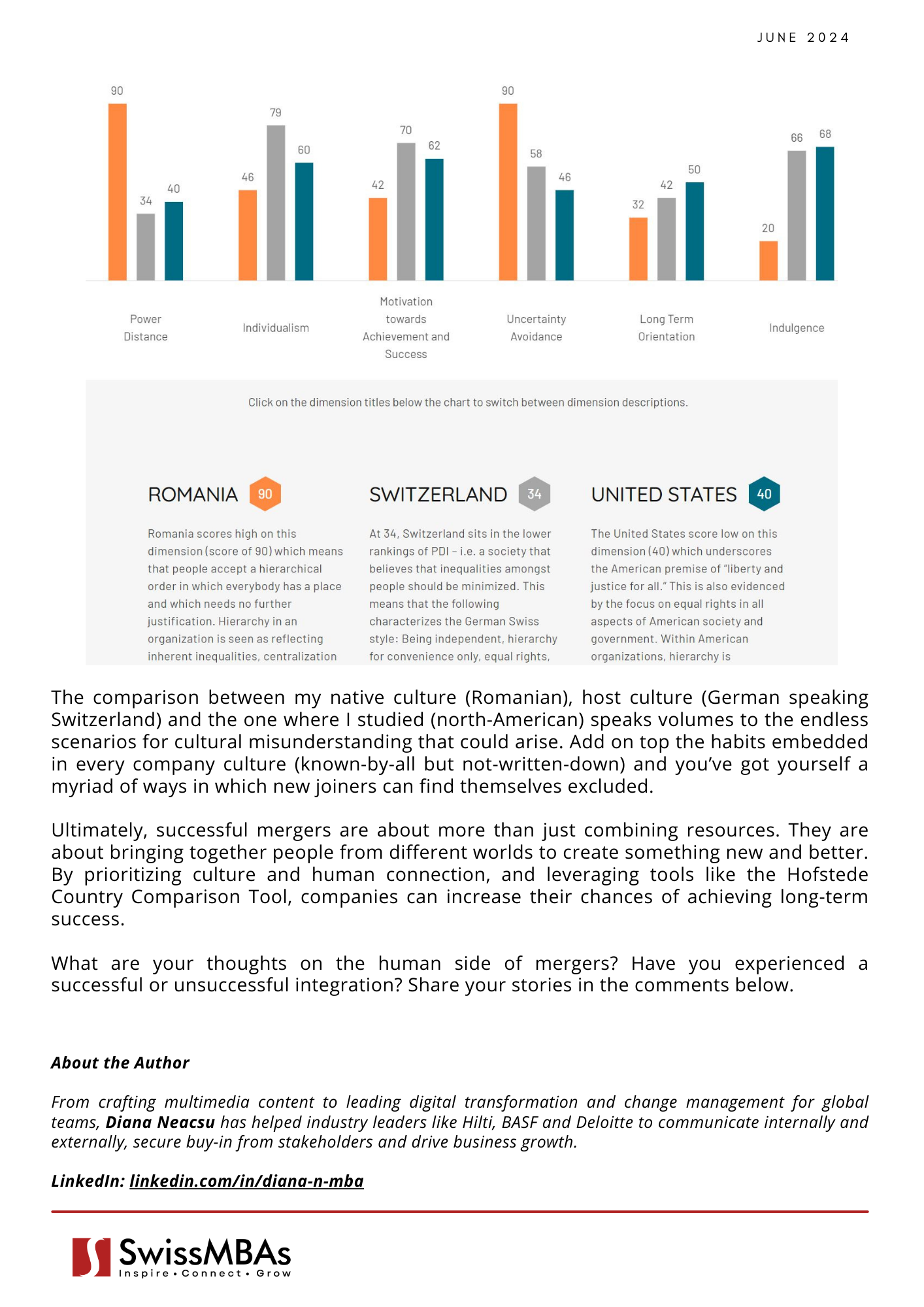
I recently sat down with a seasoned M&A expert, expecting a deep dive into financial ratios and geopolitical strategies. Instead, I got a masterclass in the human side of mergers.
She didn't mince words: "After valuation, people make or break a deal." It was a stark contrast to the number-crunching focus that often dominates merger discussions. While financial due diligence is essential, it's the soft skills, the cultural fit, and the ability to integrate teams that truly determine success.
I've always known, at an abstract level, that culture matters, but I hadn't fully grasped its critical role in mergers. It's easy to get lost in the excitement of a deal, the synergy reports, and the projected market share gains. But what about the people who will actually make it happen?
Making arranged marriages flourish
Think about it: mergers are essentially arranged marriages between companies. And like any marriage, compatibility is key. On paper, companies might seem like a perfect match, but it's the day-to-day interactions between individual employees that truly reveal whether the union will flourish or falter.
It is often said that employees leave a team/boss not a company, the reverse is also true: the decision to stay and engage boils down to whether an employee feels valued, understood and integrated by the people that they work with. This often ranges from 1 to a couple dozen individuals at most. More often than not they are the colleagues we can see from our desk, meet at the water cooler, or chat with (or consciously refrain from) on Teams.
DE&I strategies are often touted as the silver bullet for cultural integration but top-down initiatives can only go so far. Diversity, equity and inclusion happen at the grassroots level. They show in the genuine curiosity towards a different point of view, the shared laughter, the acknowledged vulnerabilities and mutual support, and the feeling of camaraderie that make work enjoyable and productive. Imagine multiplying that feeling across two entire organizations. That's the challenge – and the opportunity – of a successful merger.
The many layers of company culture
Courtesy and team spirit were probably the bare minim of social etiquette at work up until two-three decades ago. Yet in this day and age when we work with international colleagues, it’s no longer enough. Having a basic sense of the culture that they come from can help us forge stronger relationships and implicitly, get help and sponsorship when we need them.
It also prevents us from mixing trivia like capital cities and languages, but in my experience, that’s more readily forgiven than say, being assertive in an environment that values humility and collective decisions above anything else.
Tools like Hofstede's cultural dimensions can provide a fantastic starting point for not goofing up. This free resource (for now!), available at https://www.hofstede-insights.com/country-comparison-tool, allows you to compare cultures across six dimensions, offering valuable insights into work styles and values. While it won't magically solve every office feud, it can serve as a bridge, helping you understand your colleagues on a deeper level and build stronger relationships.
The comparison between my native culture (Romanian), host culture (German speaking Switzerland) and the one where I studied (north-American) speaks volumes to the endless scenarios for cultural misunderstanding that could arise. Add on top the habits embedded in every company culture (known-by-all but not-written-down) and you’ve got yourself a myriad of ways in which new joiners can find themselves excluded.
Ultimately, successful mergers are about more than just combining resources. They are about bringing together people from different worlds to create something new and better. By prioritizing culture and human connection, and leveraging tools like the Hofstede Country Comparison Tool, companies can increase their chances of achieving long-term success.
What are your thoughts on the human side of mergers? Have you experienced a successful or unsuccessful integration? Share your stories in the comments below.






